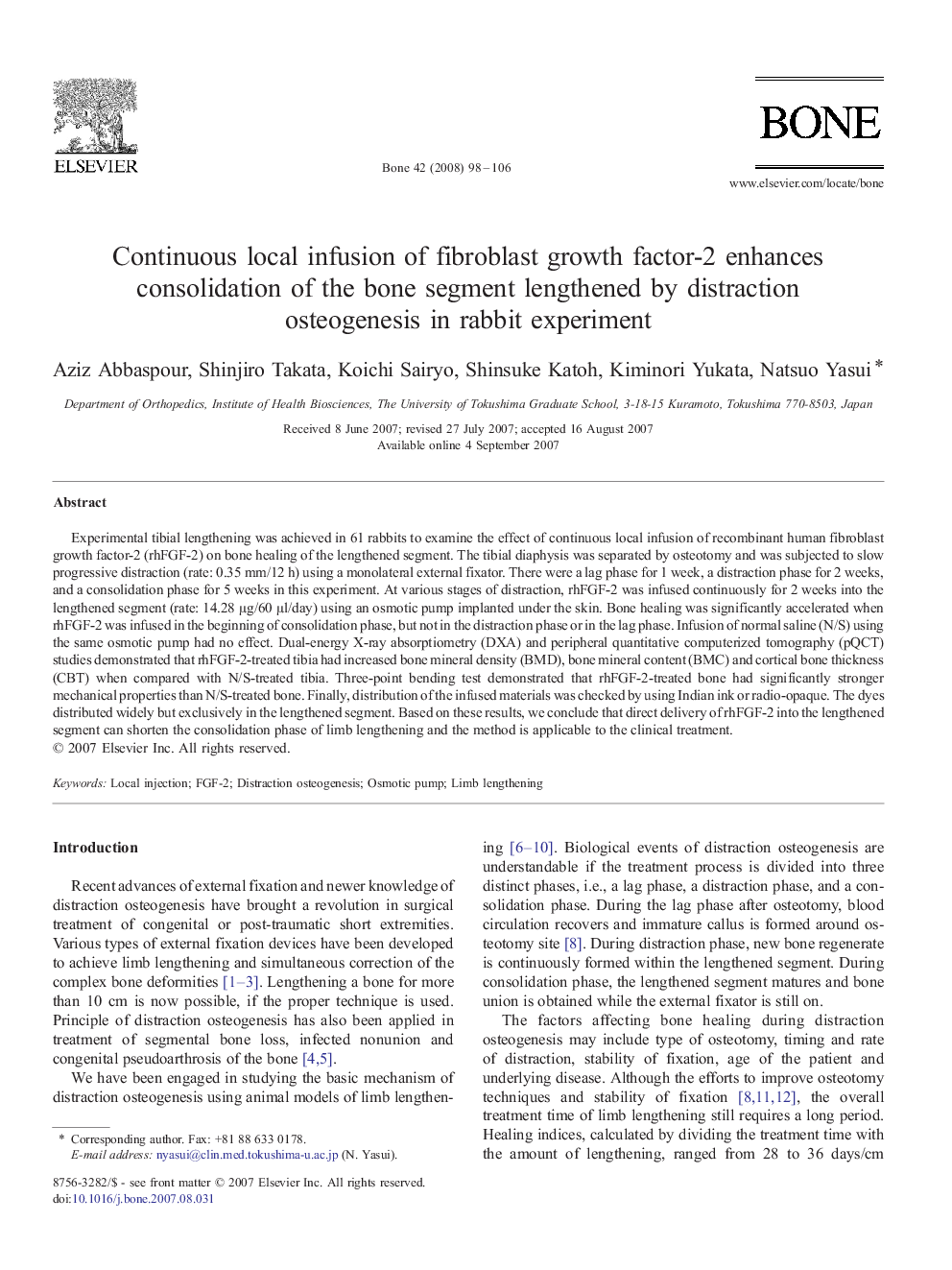| Article ID | Journal | Published Year | Pages | File Type |
|---|---|---|---|---|
| 2782543 | Bone | 2008 | 9 Pages |
Experimental tibial lengthening was achieved in 61 rabbits to examine the effect of continuous local infusion of recombinant human fibroblast growth factor-2 (rhFGF-2) on bone healing of the lengthened segment. The tibial diaphysis was separated by osteotomy and was subjected to slow progressive distraction (rate: 0.35 mm/12 h) using a monolateral external fixator. There were a lag phase for 1 week, a distraction phase for 2 weeks, and a consolidation phase for 5 weeks in this experiment. At various stages of distraction, rhFGF-2 was infused continuously for 2 weeks into the lengthened segment (rate: 14.28 μg/60 μl/day) using an osmotic pump implanted under the skin. Bone healing was significantly accelerated when rhFGF-2 was infused in the beginning of consolidation phase, but not in the distraction phase or in the lag phase. Infusion of normal saline (N/S) using the same osmotic pump had no effect. Dual-energy X-ray absorptiometry (DXA) and peripheral quantitative computerized tomography (pQCT) studies demonstrated that rhFGF-2-treated tibia had increased bone mineral density (BMD), bone mineral content (BMC) and cortical bone thickness (CBT) when compared with N/S-treated tibia. Three-point bending test demonstrated that rhFGF-2-treated bone had significantly stronger mechanical properties than N/S-treated bone. Finally, distribution of the infused materials was checked by using Indian ink or radio-opaque. The dyes distributed widely but exclusively in the lengthened segment. Based on these results, we conclude that direct delivery of rhFGF-2 into the lengthened segment can shorten the consolidation phase of limb lengthening and the method is applicable to the clinical treatment.
